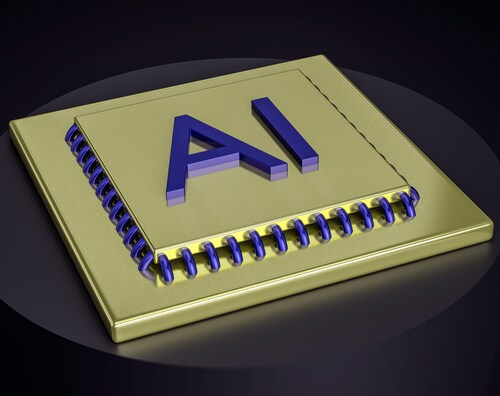
QA is on the precipice of a major change, implying the integration of AI in its practices. Current approaches to testing mostly require a combination of a lot of manual work and scripted automated scripts that have the drawbacks of being time-consuming, laborious, and prone to mistakes. AI-based QA solutions have become prevalent in the software context and are enhancing the dynamic nature and data use of the field.
AI QA uses machine learning frameworks and algorithms along with NLP and predictive analytics for the generation of test cases, identification of defects, and trend analysis for bettering the software quality. AI can be used in improving the execution of tests, decreasing the time and efforts required for maintenance, and shortening the overall SDLC so that the organizations deliver better and faster results.
Also, AI enhances test execution processes that involve identifying vital test cases while excluding those that can be repetitive or less effective in the particular context. AI-based test automation tools not only increase test speed and test accuracy, but also test tools are self-healing in nature, which recognize when a change happens and update the test scripts. This has a positive effect in enhancing the stability and reducing the amount of effort needed in making automated testing.
The Role of AI in Quality Assurance
It has become apparent that the integration of AI in QA is indispensable since it helps bring the aspect of intelligent automation in testing. Here are some key areas that now use AI for leveraging the Quality Assurance Mechanism:
Automated Test Case Generation
Automated testing tools use artificial intelligence, review the needs of the application, assess user behavior, and develop tests from previous test results. These are the benefits of the above-discussed test cases that AI can generate, augment existing testing coverage by realigning it, and make the check more comprehensive and vigorous.
Self-Healing Test Automation
From the list of objections, one of the most significant problems in the traditional test automation approach is script maintenance. Someone else at the meeting suggested that frequently, updates to the user interface, whether big or small, can affect the test scripts in some way, and hence the need for frequent updating. Healing is self-driven; intelligent healing mechanisms track changes in the application under test and modify the automation scripts automatically to avoid flaky tests and increase script maintenance.
Intelligent Defect Detection and Prediction
AI can decide the further actions based on bug history and the current application’s behavior to foresee further issues that are likely to cause disturbances in a production environment. By implementing machine learning, there are several benefits to streamline the process where QA identifies potential problems, recognizes high-risk areas that need extra attention to be addressed, proposes solutions to enhance software quality and reliability, and allocates resource quotas that focus on high-value-added activities only.
Visual Testing with AI
Automated visual testing tools primarily involve the use of image recognition and AI to compare the graphical user interfaces in different environments, including orientation and devices. This is useful in identifying areas that are likely to have a potential problem insofar as the view of the application is concerned, this will ensure that the design of the different applications is neat, which will make the work of the user easy.
AI-Powered Test Optimization
Machine learning helps in analyzing the big amount of test data for its efficient execution. To achieve this, what AI does is that it finds out which test cases are repetitive or not so useful so that QA teams can concentrate on the most important ones, meaning less time consumed.
Continuous Testing in DevOps
Several pieces of software testing can be enhanced through AI because it is possible to incorporate it with the Continuous Integration/Continuous Development cycle procedures. Test automation using artificial intelligence enhances feedback delivery and speeds up the recognition of as well as identifying flaws, and means quicker software delivery while maintaining quality. This is preferred in case you intend to achieve high deployment frequency if you are part of the Agile or DevOps team.
Benefits of AI QA
The adoption of AI in Quality Assurance brings numerous advantages that enhance the overall efficiency and effectiveness of the testing process.
Faster Test Execution: The use of artificial intelligence helps in the revising of the time taken to perform the test runs throughout different environments. Unfortunately, traditional testing approaches imply running testing in series causing problems in SDLC such as bottlenecks. Parallel testing executes a number of tests at the same time which reduces the execution time significantly employing the AI.
Further, AI enhances the efficiency of tests as it only executes the required number of tests, as well as the most important tests, when it leaves out irrelevant ones. This also helps to hasten the testing phase and release of software to meet certain deadlines without the quality being compromised.
Improved Accuracy: It reduces the likelihood of errors occurring during test achievement and assessment as it relies on artificial intelligence. Performing manual testing on applications is a bit challenging and error-prone, particularly when it is a large-scale application. Automated testing tools are based on artificial intelligence and let you learn and predict the pattern that occurs because of the defects that are present in the code eliminating false positives or false negatives.
Enhanced Test Coverage: AI enhances the number of test cases and automates the process of finding test cases that might not work normally for a human tester. Being based on data and machine learning, AI can suggest more test cases more extensive and beyond the standard, hot paths, edge cases, various users or scenarios, and even system behaviors.
Reduced Maintenance Effort: Another drawback of the traditional test automation is the high amount of maintenance, which is necessary to ensure that scripts work properly if the UI is changed or the application is updated. Self-healing self-automation adapts autonomously to alterations in the application and makes modifications to the actual test cases and scripts to avoid significant interruptions of the process, decreasing the need for manual effort. The changes in code structures are detected, and then the test cases are modified using different artificial intelligence and machine learning techniques to carry out continued and credible tests.
AI-Driven Predictive Analytics for Proactive QA: The use of AI is to identify risk conditions that might lead to failure and prevent them from happening. These are critical areas of risk, and to enhance reliability, production logs, historical test data, and user behaviour should be analyzed to get possible precaution measures that AI can suggest. Thus, pre-emptive alarms of machine learning algorithms can tip off IT administrators in terms of performance issues such as bottlenecks, security flaws, or functional breakdowns before they happen in a live environment.
The Pivotal Role of LambdaTest in AI Testing
LambdaTest is a cloud-based, scalable, and AI-based testing platform changing the way AI is used in software testing. This domain keeps on evolving, and with the help of AI, the QA process within an organization starts to incorporate intelligent, automated, and continuous frameworks that are facilitated by LambdaTest. The following ways are how LambdaTest plays a critical role as an AI testing tool:
AI-Powered Smart Test Execution: It automated test execution processes within LambdaTest by combining AI to work efficiently during the tests. Its test orchestration also makes it possible to prioritize test cases depending on historical data, analysis of risks involved, and changes made on the code thus avoiding repeated running of the same test cases while ensuring that all relevant tests are conducted.
Cross-Browser and Cross-Device AI Testing: Several validations are necessary in the development of applications for artificial intelligence for it to work effectively across devices and browsers. LambdaTest is an AI-based cross-browser testing cloud where the tests are performed on actual browsers, OS, and various mobile devices. It helps to find out the inconsistencies in the user interface and performance problems easily.
Self-Healing Test Automation: Another huge problem of test automation pertains to the problem of script maintenance. Overall, LambdaTests AI features make it possible for the test scripts to rectify errors due to the changes in the UI of the application by themselves in terms of identifying updated locators. It greatly helps to minimize the test flakiness and the amount of upkeep work.
AI-Driven Visual Testing: LambdaTest uses AI-based visual testing to identify the disparities between the UI elements and analyze the pixel-level variations of the web page on various resolutions and devices. This is especially useful in any program that consists of different layouts and designs that require the program to be more responsive.
Parallel and Smart Testing at Scale: Parallel and Smart Testing at Scale. Testing in the context of applications involving AI functions needs to be extensive as these environments contain a lot of interdependencies. LambdaTest means testing in parallel; thousands of test cases could be conducted at a single instance and time, thus saving much time. This will plan the tests in a way that is best for the execution of the tests by analyzing the tests’ history and failure modes.
Conclusion
It is becoming more effective, accurate, and easy to scale the testing process with the help of AI in Quality Assurance. Most of these solutions are built on top of conventional software testing methodologies using the power of AI, machine learning, and data analytics. These technologies assist in the generation of test cases that are not dependent on human input and hence help in covering as many platforms as possible. Configuration for self-healing test scripts allows the test scripts to cater for changes in the organization’s application UI and the functional features associated with it, reduces maintenance, and ensures stability in the automated testing process.
Also, it is worth mentioning the packages such as predictive defect analysis that help an organization to analyse potential problems before they worsen, so that necessary actions can be taken regarding software imperfections. This leads to reduced production of faulty materials, better customer satisfaction, and quality software programs. This is a critical area of using AI because test execution rationalization minimizes repetition, focuses on risk areas, maximizes resource management, and speeds up software release.
Word Count: 1700


